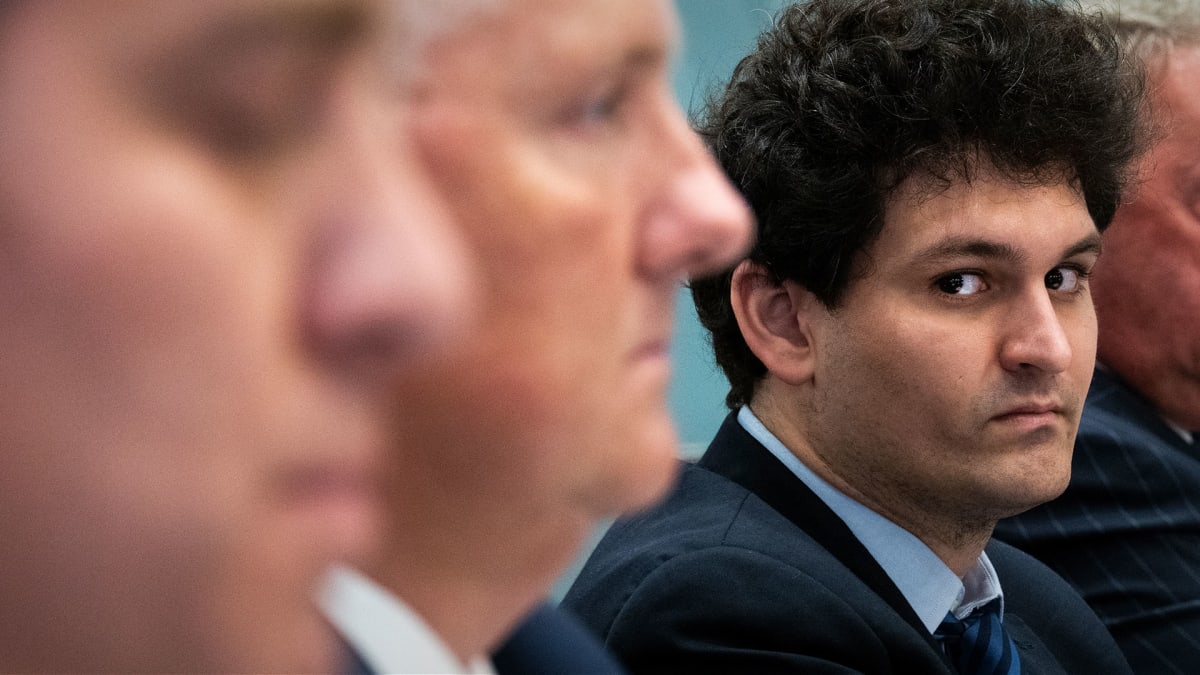
Sam Bankman-Fried wants to be the director of the movies that will be made in the future about the bankruptcy of his crypto empire.
He wants to protect his legacy, which, since November 11, is synonymous to one of the greatest financial fiascos in modern history.
He has joined the club of the biggest crooks in popular imagery. He has been dubbed the "Bernie Madoff of crypto."
Bankman-Fried, 30, who was known by his initials "SBF" in the crypto sphere, thinks he still has the power to control his image. He does not seem to understand that, since his call to his great nemesis Changpeng Zhao for help on November 8, he has lost control.
He is no longer the king of cryptocurrencies. Next to his name, the tabloids now add the adjective "disgraced" and the words "Ponzi Scheme", framing him as the villain and not the victim.
Perfect Storm
But he does not give up. In his latest series of tweets explaining the debacle that led to the bankruptcy of FTX and all of its affiliates on November 11, Bankman-Fried appears to have come up with a defense that clears him of any wrongdoing.
He explains that FTX and Alameda Research, his cryptocurrency trading platform, were the victims of a perfect storm. Basically, if there hadn't been a combination of adverse events that took place at the same time, we wouldn't be talking about him as a potential crook, likely to end up in jail.
Here is his reasoning.
"Leverage built up-- ~$5b of leverage, backed by ~$20b of assets which were...." he wrote on Twitter on November 16. "Well, they had value. FTT had value, in EV! But they had risk."
FTT is the cryptocurrency issued by FTX. It is currently down 98.1%, compared to its all-time high in September 2021, in the midst of cryptomania, according to data firm CoinGecko.
"And that risk was correlated--with the other collateral, and with the platform. And then the crash came. In a few day period, there was a historic crash--over 50% in most correlated assets, with no bid side liquidity. And at the same time there was a run on the bank."
In addition, "roughly 25% of customer assets were withdrawn each day--$4b," Bankman-Fried claimed.
He Ignores Several Facts and Practices
To summarize, the Bankman-Fried theory is as follows: there was certainly leverage but this leverage was covered by FTT holdings. Unfortunately, an event -- Zhao's decision to sell $530 million FTT on November 6 -- triggered a drop in the value of FTT which in turn caused a run on the bank. Faced with the influx of client demands, FTX found itself short of cash and was forced to file for Chapter 11 bankruptcy.
"Shrapnel," Bankman-Fried concluded.
This explanation, which makes a parallel to the sudden explosion of a bomb, ignores several facts and practices in FTX.
The insolvency of FTX was the result of a liquidity shortfall when clients attempted to withdraw funds from the platform. The liquidity shortfall appears to have been the result of FTX’s founder reportedly transferring $10 billion of customer funds from FTX to Alameda Research.
FTX faces a shortfall of $1 billion to $2 billion.
Bankman-Fried’s tweets clearly indicate that there was a complete absence of risk management. His reference to correlated risk means that, an adverse market event would simultaneously impact multiple assets negatively, requiring more capital to withstand losses. Extreme leverage and correlated risk in a highly-volatile industry was a disaster waiting to happen.
As a crypto exchange, the firm executed orders for its clients, taking their cash and buying cryptocurrencies on their behalf. FTX acted as a custodian, holding the clients’ cryptocurrencies.
FTX then used its clients’ crypto assets, through its sister company’s Alameda Research trading arm, to generate cash through borrowing or market making. The cash FTX borrowed was used to bail out other crypto institutions in the summer of 2022.
At the same time, FTX was using the cryptocurrency it was issuing, FTT, as collateral on its balance sheet. This represented a significant exposure, due to the concentration risk and the volatility of FTT.
FTX's financials also showed that there was a "back door" in the books, created with "bespoke software," according to Reuters. It was described as a way that Bankman-Fried could alter the firm's financial records without raising any alerts.
But Bankman-Fried denied the existence of a "back door."
Regulators have launched investigations.
For now, Bankman-Fried is free even though he has already been questioned by the police in the Bahamas where he lives and where FTX's headquarters are.







